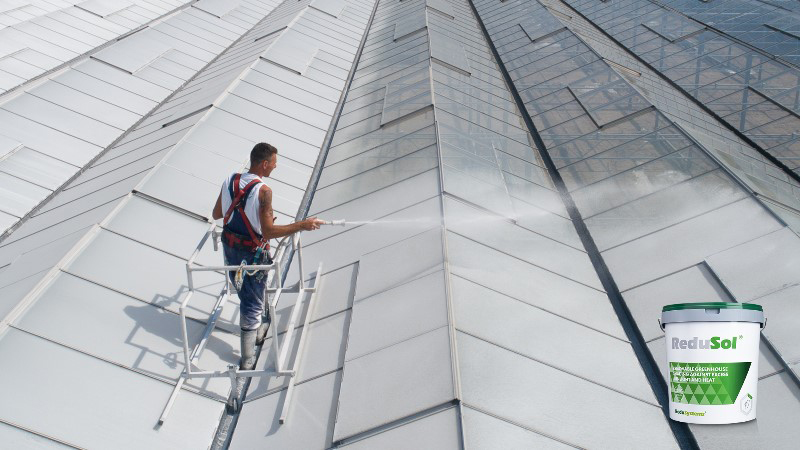How Biostimulants Can Increase Ornamental Plant Health and Quality
There is increasing interest among greenhouse growers in the use of biostimulants to reduce chemical inputs without sacrificing crop quality. By understanding how different biostimulant active ingredients can improve plant health and quality, growers can best decide how biostimulants may benefit their operations.
How Can Biostimulants Help?
The most common active ingredients in biostimulants are beneficial microorganisms (fungi and bacteria). These microorganisms can increase the bioavailability of essential macro and micronutrients that would otherwise be leached from the container. Increasing the bioavailability of nutrients in the media increases overall plant health by improving nutrient uptake and increasing tissue nutrient content.
These unseen benefits often lead to more visual effects such as larger plants with greener leaves and more developed root systems, as well as finished plants with more and/or larger flowers. Production timing may be reduced due to faster growth and earlier flowering. Biostimulants can also increase shoot growth, root growth, and flower size and numbers by stimulating the production of growth promoting hormones, such as auxins, cytokinins, and gibberellins by the plant. Some bacteria also produce auxins, which can enhance root growth in associated plants.
Arbuscular mycorrhizal fungi (mycorrhizae) form mutualistic associations with the roots of 90% of land plants growing in the soil, but these associations are lacking in greenhouse-produced crops. The fungal hyphae network produced by these mycorrhizae effectively expands the surface area of the plant’s root system and allows them to more efficiently take up both water and nutrients. The plants can then use the provided nutrients more effectively. When mycorrhizae are incorporated into peat-based growing mixes, the benefits to bedding plants include greener leaves, larger shoots, and more flowers.

The above chart highlights the benefits of biostimulants in ornamentals throughout different stages in the greenhouse marketing chain.
Reducing Inputs, Increasing Crop Quality
When evaluating the effects of biostimulant applications, it is important to understand the growing conditions that will optimize efficacy. For many biostimulants, this information is not well known.
In general, growth promotion from biostimulant applications will be less obvious if plants are already growing under optimal water and fertility levels. Growers can take advantage of the biostimulant’s ability to improve plant performance under suboptimal conditions by supplementing fertilizer inputs with a biostimulant application.
Growers that produce young plants will benefit from biostimulant application during propagation and transplant by increasing the germination and vigor of seedlings and cuttings. This increased vigor reduces transplant shock and can induce disease tolerance in young plants. Overall, growers can expect to see a reduction in young plant loss when properly implementing biostimulants.
Growers producing finished plants can use biostimulants to grow plants with lower fertilizer inputs without sacrificing important traits such as flower number or plant size. Plants treated with biostimulants may also be healthier and sturdier when grown with limited resources, resulting in higher quality plants for retail and consumers.
By making these changes in cultural practices, growers can reduce the amount of synthetic chemical fertilizers that are needed to produce high-quality crops.
Easy Ways to Incorporate Biostimulants
Biostimulants can easily be incorporated into current production practices. If you purchase bagged media, consider products that already include biostimulants, such as mycorrhizae. Biostimulants in granular form can be added to custom mixes or when you prepare your own media. Many biostimulants also come in liquid formulations, allowing for the selection of a biostimulant product that best fits your production needs.
Since the active ingredient in many biostimulants is a living organism (either a bacteria or fungi), it is important to make sure that these products are fresh and well within their shelf life and that they are stored properly. Young plants can be watered in with an appropriate biostimulant product, increasing resiliency of the plants from an early stage. Keeping in mind product timing, method, and rate, growers can customize a biostimulant program that fits in with their current practices.
Microbial Research Shows Promise
Research using beneficial bacteria from a collection at The Ohio State University identified two strains of Pseudomonas bacteria that increase the health and quality of plants grown under low-nutrient conditions. Petunia, impatiens, and pansy plants were grown throughout the experiment with only 25 ppm N from 15-5-15 CaMg fertilizer to induce low-nutrient stress. Plants were treated weekly with a media drench of diluted bacteria cultures, similar to the application of commercially available biostimulant products, and an untreated control was used for comparison.
Application of beneficial bacteria increased plant quality by improving plant size and flower number under low-nutrient conditionsIn addition, bacteria application improved plant health by increasing the foliar content of N, P, K, Ca, Mg, and S.
Microbial inoculants are a common active ingredient in many biostimulant products. Bacteria like these Pseudomonas strains colonize plant roots, forming a beneficial relationship with the plant that improves nutrient use efficiency and enhances plant growth. If plants are fertilized with optimal or super-optimal nutrient levels, growth promotion from these beneficial bacteria may not be seen. Our research shows that application of beneficial bacteria can provide growers with a solution to decrease fertilizer inputs without sacrificing crop quality, making existing greenhouse practices more economically and environmentally sustainable.
Biostimulants have a lot of potential as a sustainable tool in greenhouse production. However, as with any new product, growers should trial products before implementing them, and have clear expectations of what results to expect. Not all biostimulants will work for every growing environment or greenhouse crop, and they will always work better as a preventative tool rather than a remedy for existing problems. When incorporated correctly, biostimulants allow growers to produce high-quality plants while reducing other chemical inputs.










